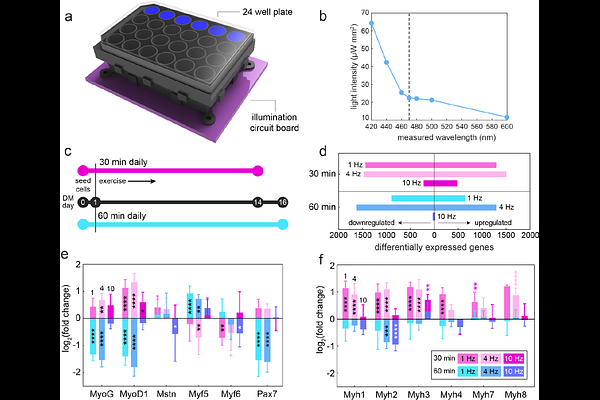Physiological and functional characterization for high-throughput optogenetic skeletal muscle exercise assays

Physiological and functional characterization for high-throughput optogenetic skeletal muscle exercise assays
Heisser, R.; Bu, A.; Schwendeman, L.; Rossy, T.; Raman, R.
AbstractExercise has long been considered an essential part of human health and longevity. Recent physiological studies have expanded muscles role beyond simply acting as an actuator, revealing muscles exercise-mediated paracrine and endocrine relationships with other organ systems. In vitro engineered skeletal muscle models can address physiological questions about exercise adaptation with the precision of cell biology. Optogenetic tools have enabled a noninvasive approach to stimulating muscle contraction that avoids the potential off-target effects of electrical stimulation techniques. In this article we propose high-throughput culture and optical exercise protocols to generate statistically robust cellular exercise response datasets. We characterize optical rheobase for 2D muscle tissue morphology, finding that optical intensities as low as 5 W mm-2 can trigger contraction. We then analyze bulk RNA sequencing data collected from high throughput, acute exercise protocols and find a rich display of transcriptional behavior that is consistent with experimental observations. The spontaneous contractility of our tissue constructs introduced oxygen diffusion challenges when maintained in a 24 well plate, and our analysis shows divergent myogenic and pathological transcriptional consequences of hypoxia. We believe our techniques provide a practical foundation for conducting future high-precision in vitro exercise studies of skeletal muscle.